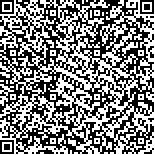| 摘要: |
| [摘要] 目的 分析强直性脊柱炎(ankylosing spondylitis,AS)活动期CT与MRI的影像学表现特征以及对临床诊疗的指导意义。方法 回顾性分析2015-06~2018-12经该院风湿科确诊的48例AS脊柱受累患者的资料,均临床确诊AS多年,近期腰部疼痛加重,在出现症状后2周之内进行MRI及CT检查,并对两种方法的诊断特点进行评价。结果 48例AS患者CT检查中28例椎体边缘骨质增生,25例椎体呈“方椎”,8例脊柱呈“竹节椎”,21例椎小关节炎,其中5例椎小关节骨性连接,11例椎间隙变窄,密度增高。MRI检查中胸椎11例,腰椎39例。其中18例显示椎体终板前上、后上角T1WI低信号,T2WI及压脂高信号改变,30例显示整个及部分椎体T1WI低信号,T2WI及压脂高信号,11例椎间盘T2WI显示髓核结构不均一,信号减低,椎间盘高度降低,21例椎小关节局部骨质及周围滑膜T1WI低信号,T2WI及压脂高信号。结论 AS活动期的MRI及CT检查都具有一定的特点,但MRI检查对AS活动期显示更具特征性,应优选MRI检查。 |
| 关键词: 强直性脊柱炎 脊柱关节炎疾病活动期 磁共振成像 |
| DOI:10.3969/j.issn.1674-3806.2020.06.18 |
| 分类号:R 445.2 |
| 基金项目: |
|
| Analysis of CT and MRI features in active ankylosing spondylitis |
|
LI Wei-chao
|
|
Department of Radiology, the People′s Hospital of Linyi City, Shandong 276000, China
|
| Abstract: |
| [Abstract] Objective To analyze the imaging features of computed tomography(CT) and magnetic resonance imaging(MRI) in active ankylosing spondylitis(AS) and their guiding significances in clinical diagnosis and treatment. Methods The data of 48 patients with AS spinal involvement diagnosed by the department of rheumatology of our hospital from June 2015 to December 2018 were retrospectively analyzed. All the patients had been clinically diagnosed with AS for many years, with recent lumbar pain aggravation, and underwent MRI and CT examinations within 2 weeks after the onset of symptoms. The diagnostic characteristics of the two methods were evaluated. Results Among the 48 AS patients, CT examination showed that 28 cases had vertebral margin bone hyperplasia, and that 25 cases had “square vertebra” in the vertebral body, and that 8 cases had“ bamboo” spinal column and that 21 cases had vertebral small arthritis among whom 5 cases had bone junction of vertebral facet joint and 11 cases had narrow vertebral space and increased density. MRI was performed in 11 cases of thoracic vertebrae and 39 cases of lumbar vertebrae, among whom MRI examination showed that T1WI low signal, T2WI and pressure fat high signal changes in the anterior and posterior upper corners of vertebral body in 18 cases, that T1WI low signal,T2WI and pressure fat high signal changes of the entire and partial vertebral bodies in 30 cases, that uneven structure of nucleus pulposus and decreased signal and decreased height of intervertebral disc indicated by T2WI of intervertebral disk in 11 cases and that T1WI low signal,T2WI and pressure fat high signal of local bone and peripheral synovium of facet joints in 21 cases. Conclusion Both MRI and CT have certain characteristics on the examination of active ankylosing spondylitis, but MRI examination has more characteristic for the disease, so MRI examination should be preferred. |
| Key words: Ankylosing spondylitis(AS) Active spinal arthritis Magnetic resonance imaging(MRI) |

